Potřebujeme váš souhlas k využití jednotlivých dat, aby se vám mimo jiné mohly ukazovat informace týkající se vašich zájmů. Souhlas udělíte kliknutím na tlačítko „OK“.
ASTM F2261-06(2011)
Standard Test Method for Pressure Rating Poly(Vinyl Chloride) (PVC) Plastic Pipe Fittings, Schedule 40 and 80 Socket-Type
Automaticky přeložený název:
Standardní zkušební metoda pro jmenovitý tlak Poly (vinylchlorid) (PVC) potrubní armatura z plastu, plán 40 a 80 Socket-Type
NORMA vydána dne 1.10.2011
Informace o normě:
Označení normy: ASTM F2261-06(2011)
Poznámka: NEPLATNÁ
Datum vydání normy: 1.10.2011
Kód zboží: NS-53394
Počet stran: 3
Přibližná hmotnost: 9 g (0.02 liber)
Země: Americká technická norma
Kategorie: Technické normy ASTM
Kategorie - podobné normy:
Anotace textu normy ASTM F2261-06(2011) :
Keywords:
PVC socket fittings, pressure rating, method, ICS Number Code 23.040.45 (Plastic fittings)
Doplňující informace
| Significance and Use | ||||||||||
|
The procedure for establishing the long-term pressure rating of fittings starts with an extrapolation of a regression line that is based on fitting failure data with respect to time, when assemblies are tested in accordance with Test Method D 1598. The pressure-versus time to failure data are obtained using water at 73°F in assemblies that are immersed in a water or air environment. The extrapolation is made in such a manner that the long-term hydrostatic pressure rating is determined for these conditions. The pressure design basis is determined by considering the following items and evaluating them in accordance with 6.3. 4.2.1 Long-term hydrostatic pressure-strength at 100 000 h, 4.2.2 Long-term hydrostatic pressure-strength at 50 years The fitting pressure rating may be calculated by multiplying the pressure design basis (PDB) by the appropriate design factor (DF). |
||||||||||
| 1. Scope | ||||||||||
|
1.1 This test method covers a procedure for establishing Pressure Rating for PVC schedule 40 and 80 socket-type fittings by evaluating fitting failure test data derived by testing water-filled assemblies of pipe and fittings. 1.2 Unless the data approximates a straight line, when calculated using log-log coordinates, it is not possible to assign a pressure rating to that product or sample of product. Data that exhibit high scatter, or a downward curve, due to low long term data, will give low extrapolated values that are more conservative when calculated using log-log co-ordinates. In addition, this downward curve will show as higher scatter, and where the lower confidence level limits are not met the data shall be classified as unsuitable. (See Note 1) Note 1This test method is similar to that used in Test Method D 2837, which has been used for about 30 years to establish the HDS of plastic pipe materials and is the basis for all pressure ratings assigned to plastic pipes. 1.3 The products covered by this test method are schedule 40 or 80 molded PVC fittings that conform to Specifications D 2466 or D 2467. 1.4 The pressure ratings developed using this test method applies only to fittings identical to the ones that were tested. Some variables that will affect the pressure rating are - pipe size, pattern, mold design, material, and molding conditions. 1.5 The values in inch-pound units are to be regarded as the standard. The values given in parentheses are mathematical conversions to SI units that are provided for information only and are not considered standard. 1.6 The testing procedure used to obtain the fitting failure data shall be as described in those sections of Test Method D 1598, that are referenced in Section of this test method. 1.7 The products covered by this test method are intended for use in the distribution of pressurized liquids at 73°F. When appropriate, the design engineer must consider the effects of elevated temperature and chemical compatibility of the liquid with the fitting material and apply necessary design factors. This standard does not purport to address all of the safety problems, if any, associated with its use. It is the responsibility of the user of this standard to establish appropriate safety and health practices and determine the application of regulatory limitations prior to use. Note 2Pressurized (compressed) air or other compressed gases contain large amounts of stored energy which present serious safety hazards should a system fail for any reason. |
||||||||||
| 2. Referenced Documents | ||||||||||
|
Podobné normy:
Historická
1.8.2011
Historická
1.4.2012
Historická
1.12.2011
Historická
1.4.2014
Historická
1.12.2006
Historická
1.9.2011
Doporučujeme:
EviZak - všechny zákony včetně jejich evidence na jednom místě
Poskytování aktuálních informací o legislativních předpisech vyhlášených ve Sbírce zákonů od roku 1945.
Aktualizace 2x v měsíci !
Chcete vědět více informací? Podívejte se na tuto stránku.


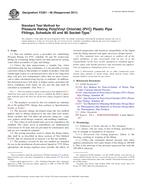
 ASTM D3311-11
ASTM D3311-11 ASTM D3350-12e1
ASTM D3350-12e1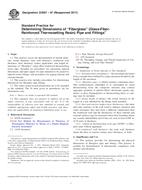 ASTM D3567-97(2011)..
ASTM D3567-97(2011)..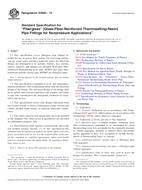 ASTM D3840-14
ASTM D3840-14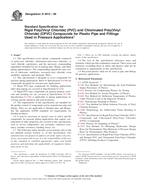 ASTM D3915-06
ASTM D3915-06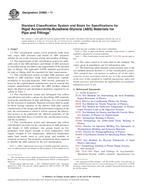 ASTM D3965-11
ASTM D3965-11
 Cookies
Cookies
